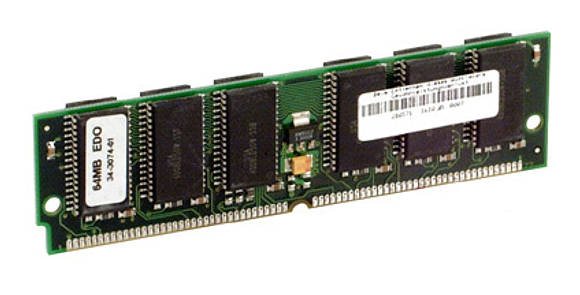extended data output DRAM (EDO-DRAM)
Extended Data Output (EDO) is a technique developed in 1994 to accelerate the access speed ofmain memories. This technique shortens the read cycle by internally already processing the following address for access, while at the outputs the data read out is delayed by minimal time periods. This parallel processing increases the access speed.
The data read time for the four Q-words is 9 clocks in the burst cycle 5-2-2. The EDO technology, which operates asynchronously and does not require a clock signal, is used with RAMs and DRAMs. EDO-capable motherboards are a prerequisite; other motherboards do not support the functions of the EDO modules.
Access times are said to improve by 20% and more with EDO technology. For example, the data transfer rates of an EDO DRAM are between 50 ns and 70 ns and the clock frequencies between 33 MHz and 75 MHz. Such a memory chip operates with supply voltages between 3.3 V (3V3) and 5.0 V (5V) and has 72 pins.
EDO, also known as Hyper Page Mode( HPM), has replaced the older Fast Page Mode( FPM). The transition from EDO DRAM to the faster Synchronous Dynamic RAMs( SDRAM) takes place in the mid-1990s.

